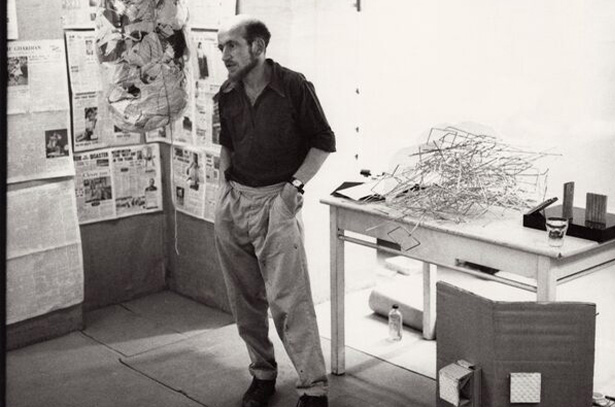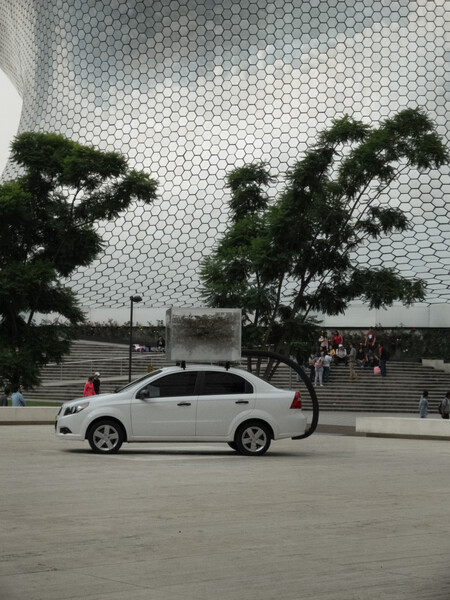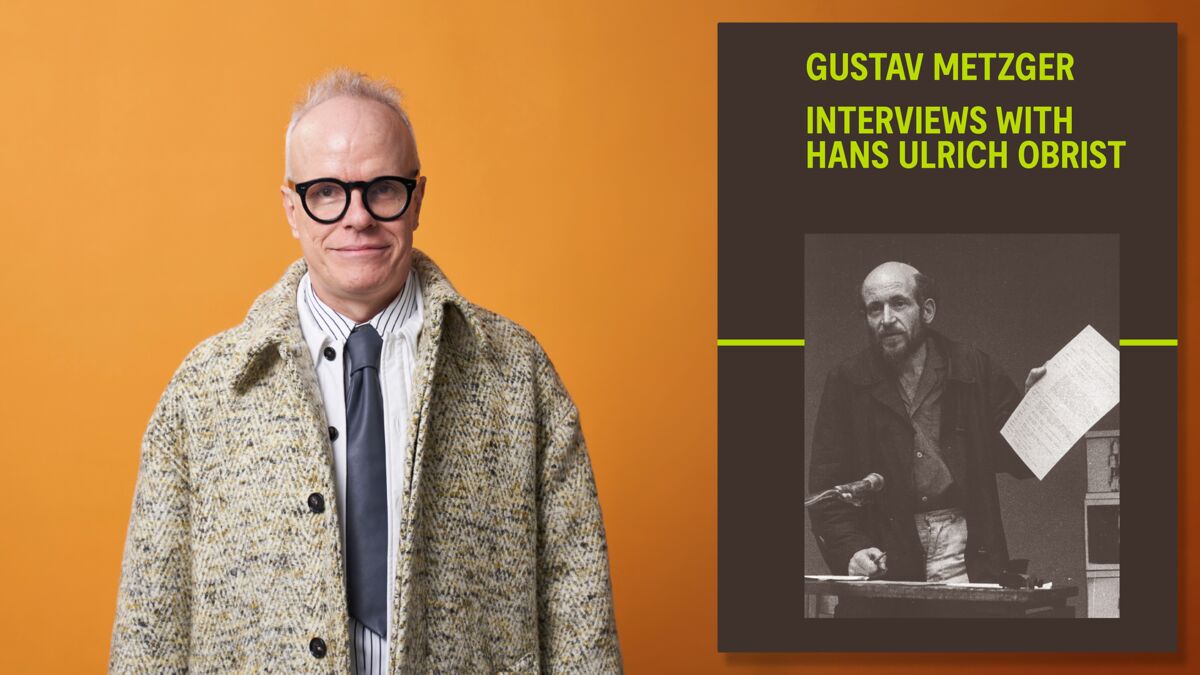
Gustav Metzger

Gustav Metzger was a visionary artist and radical thinker. At the heart of his practice, which spanned over 65 years, are a series of constantly opposing yet interdependent forces such as destruction and creation. Metzger’s involvement in anti-nuclear movements such as the Committee of 100 and his life-long activism to combat environmental destruction was fundamental to his provocative questioning of the role of artist and of conventional forms of artmaking and display. His auto-destructive art, meant as a public art form that would instigate social change, sought to provide a mirror of a social and political system that he felt was indifferently progressing towards total obliteration. He also sought to place the emphasis on action over creation of the art object, inviting viewers to interact with some of his work to heighten their impact.
Metzger was born in Nuremberg, Germany on 10 April 1926 to Polish-Jewish parents. He arrived in Britain on the Kindertransport in 1939 with his older brother. Most of their immediate family were killed in the Holocaust. From 1945 to 1953, Metzger studied art in Cambridge, London, Antwerp and Oxford and studied under the artist David Bomberg.
The artist’s legacy is profoundly rooted in activism in both the political and artistic realms. Metzger envisaged art as a means of communicating the futility and horrors of conflict and war. By 1958, Metzger had become heavily involved in anti-capitalist, anti-consumerist movements and the Campaign for Nuclear Disarmament. In 1960, he was a founder member of the Committee of 100 and this led to a short imprisonment in 1961 with Bertrand Russell and other members of the Committee for encouraging mass non-violent civil disobedience.
Metzger's political activism provided the foundation for his first manifesto in 1959, titled ‘Auto-Destructive Art,’ which he described ‘as a desperate last-minute subversive political weapon...an attack on the capitalist system… .’ That year he also created his first auto-destructive artworks by spraying acid onto sheets of nylon, which caused the disintegration of the work itself, as another form of anti-nuclear protest. Metzger went on to organise the seminal Destruction in Art Symposium in London in 1966, centred around destruction-themed events, talks and activities that brought together artists from all over the world, including Yoko Ono who first performed her ‘Cut Piece.’ This was later followed in 1974 by a call from Metzger for artists to support a three year Art Strike which was to run from 1977 to 1980, and he did, in fact, withdraw from the art world in those years.
The notion of creation is a continual counterpoint to themes of destruction throughout Metzger’s practice. Drawing on experiments first began in the mid-1960s for the exhibition ‘Extremes Touch’ in Swansea, he developed the principle of ‘auto-creative art,’ later explaining, ‘If you look at the first manifesto for auto-destructive art, the term ‘auto-creative art’ receives more prominence, so there’s a side of my activity that has to do with growth and opening to the endless in life and art.’
An enduring interest in science began in Metzger’s formative years and played a significant role in the development of his work throughout his entire life. In 1965, he used liquid crystals that were magnified and projected onto walls as the basis for one of his most well-known works, ‘Liquid Crystal Environment.’ Through his experimentation with liquid crystals and dedication to the effects of aesthetic beauty on the human experience, Metzger explored what he described as ‘the use of art to recharge the human being who can tend towards depletion or collapse.’ He also developed the idea of using computer technology for art long before many of his contemporaries.
In 1995, Metzger began his ‘Historic Photographs’ series—large, complex installations that sought to confront people with some of the most powerful and tragic images of events from recent history. ‘To Crawl Into—Anschluss, Vienna, March 1938’ (1996) features an enlarged image of Jewish people being made to scrub the streets on their hands and knees, hidden under a large piece of cloth that obscures the entire image, which lays directly on the floor. This work challenges the viewer to crawl under the fabric and directly onto the image to see it - and in doing so, puts the viewer into an uncomfortable position that mimics those in the picture. As he explained: ‘Challenge and risk are integral to the work. And risks are what life is all about: some of them we are aware of; some of them we evade.’
Biography
Selected Solo Exhibitions
Selected Group Exhibitions
Lectures/Demonstrations
Lectures/Symposiums/Conferences
Bibliography
Selected Monographs
Artist's Books & Writings
Manifestos
Publications
Press
Exhibitions
1 / 2
1 / 5
Events
1 / 7
News
1 / 6
1 / 2
Ursula
1 / 5

















































